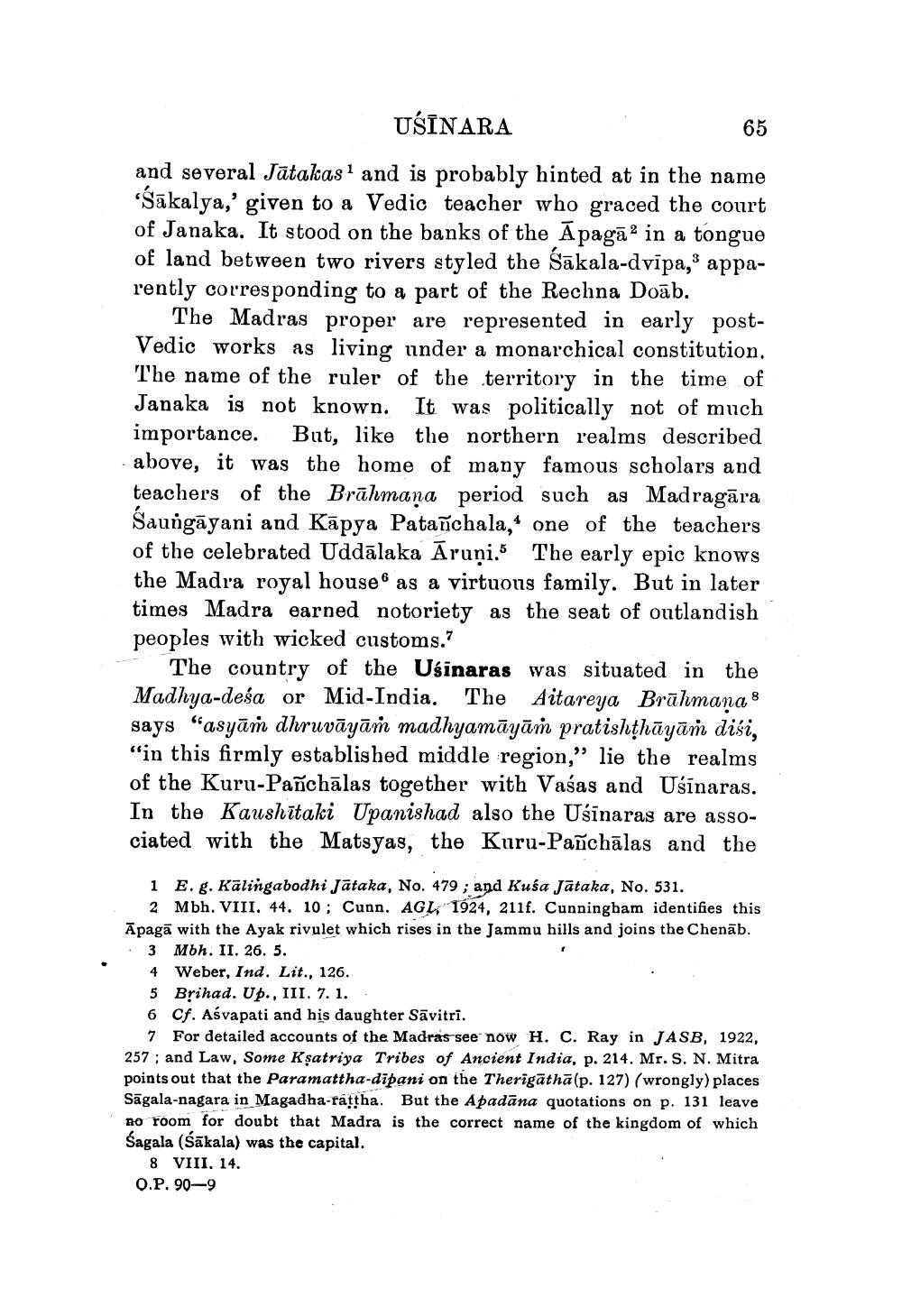________________
USINARA
65
and several Jātakas1 and is probably hinted at in the name 'Sakalya,' given to a Vedic teacher who graced the court of Janaka. It stood on the banks of the Apaga2 in a tongue of land between two rivers styled the Sakala-dvipa,3 apparently corresponding to a part of the Rechna Doab.
The Madras proper are represented in early postVedic works as living under a monarchical constitution. The name of the ruler of the territory in the time of Janaka is not known. It was politically not of much importance. But, like the northern realms described above, it was the home of many famous scholars and teachers of the Brahmana period such as Madragāra Saungayani and Kapya Patañchala, one of the teachers of the celebrated Uddalaka Aruni. The early epic knows the Madra royal house as a virtuous family. But in later times Madra earned notoriety as the seat of outlandish peoples with wicked customs."
The country of the Usinaras was situated in the Madhya-desa or Mid-India. The Aitareya Brahmanas says "asyam dhruvāyāṁ madhyamāyām pratishṭhāyām disi, "in this firmly established middle region," lie the realms of the Kuru-Pañchalas together with Vasas and Usinaras. In the Kaushitaki Upanishad also the Usinaras are associated with the Matsyas, the Kuru-Pañchalas and the
1
E. g. Kalingabodhi Jātaka, No. 479; and Kusa Jātaka, No. 531. 2 Mbh. VIII. 44. 10; Cunn. AGL, 1924, 211f. Cunningham identifies this Apaga with the Ayak rivulet which rises in the Jammu hills and joins the Chenab. 3 Mbh. II. 26. 5.
4 Weber, Ind. Lit., 126..
5 Brihad. Up., III. 7. 1.
6 Cf. Aśvapati and his daughter Savitri.
7 For detailed accounts of the Madras see now H. C. Ray in JASB, 1922, 257; and Law, Some Ksatriya Tribes of Ancient India, p. 214. Mr. S. N. Mitra points out that the Paramattha-dipani on the Therigatha (p. 127) (wrongly) places Sāgala-nagara in Magadha-rättha. But the Apadana quotations on p. 131 leave no room for doubt that Madra is the correct name of the kingdom of which Śagala (Sakala) was the capital.
8 VIII. 14.
O.P. 90-9




